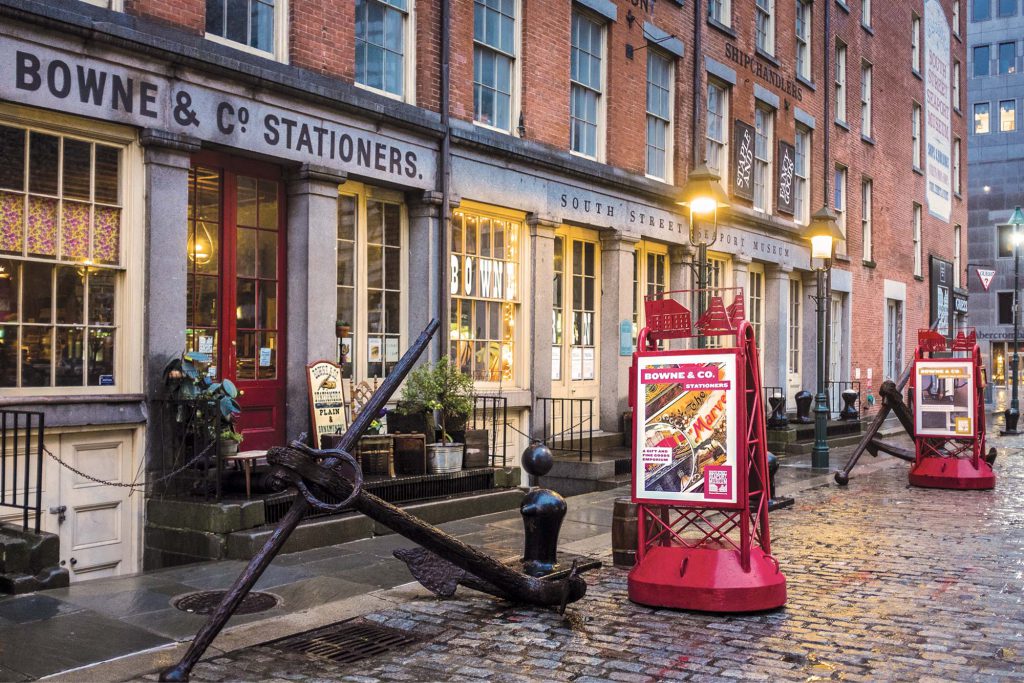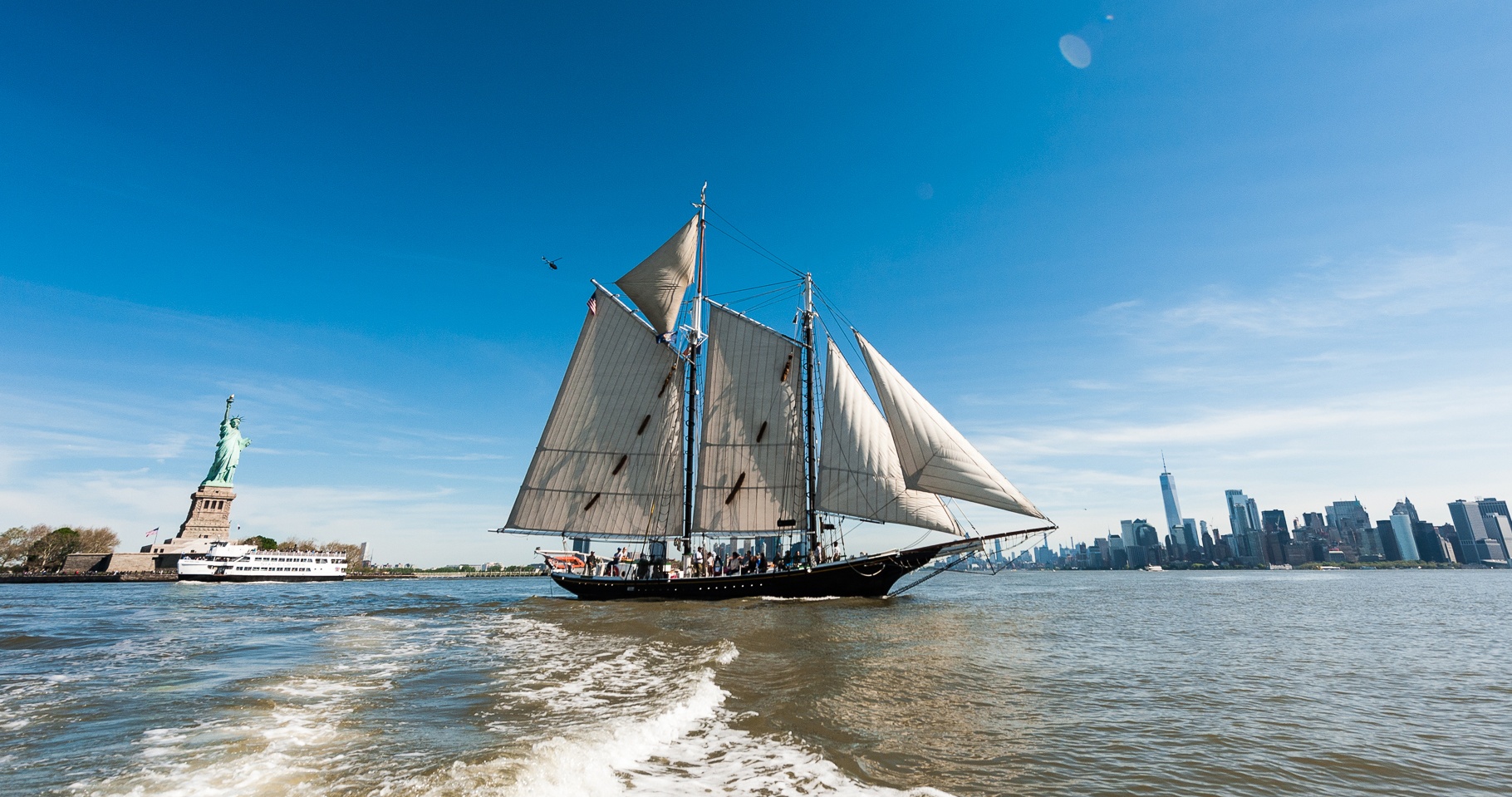An update on the work being done on Pioneer
A Seaport Museum Blog
by Malcolm Martin, Fleet Captain and Master Schooner Pioneer
October 8, 2020
Hi Folks, Capt. Martin, Fleet Captain and Master of schooner Pioneer, here. I think a lot of people have been wondering, “…what is going on with our beloved schooner Pioneer these days…?”
Well, let me assure you that while things have been made difficult by Covid-19, progress continues to be made!
But let me start back in the beginning… The riveted wrought iron Pioneer was launched in 1885 in Marcus Hook, PA. Originally rigged as a sloop she was converted to a schooner and then ultimately given an inboard engine with her sailing rig removed entirely. By the 1960’s, though still working, she was an engineless construction barge. Throughout her life she seems to have always had work and thus some level of care, but eight decades had taken its toll—her hull was significantly rotten and she was soon destined for the beach. An enterprising dock builder and professional mariner by the name of Russell Grinnell recognised her for what she was, bought the hulk in 1968 and refitted her to her sailing glory at Gladding Hearn shipyard in Somerset, MA. Her iron shell was too porous to save but the iron framework still had life so she was replated in steel and she was fitted with the schooner rig appropriate for the once common coasting schooners. Tragically the architect of her phoenix-like resurrection died shortly after the project’s completion. His estate generously donated her to the fledgling South Street Seaport Museum and she arrived at Pier 16 in August 1970.
Since that time, Pioneer has carried hundreds of thousands of people on the waters of New York. She has sailed further afield at times, from Massachusetts to South Carolina flying the Museum’s flag. She has carried youth at risk and octogenarians. She has carried New Yorkers of all walks of life and countless visitors who experience New York from her decks in a way like none other.
She has proved to be a demanding but forgiving teacher, teaching and preserving the skills and ways of traditional sail. Hundreds of professional sailors have Pioneer on their resume and thousands of volunteers have learned the care and feeding, the operation and the upkeep of the ship here at South Street.
But after 50 years of yeoman’s service, she had come to need some deep refitting and repair. As exceptional as her care has been here at South Street, it has been clear for some time that she was coming to need a deep going over. There was the entire replacement of the centerboard trunk – a difficult part of the hull to service which had had repairs but had become too wasted to repair further. Her 20 year old main engine needed replacement and she will soon have a modern clean burning engine. And there were less obvious issues in areas which were concealed beneath masonry infill between the floor frames – masonry that had been largely undisturbed since her relaunching 1968.
So it was with this list that she went to Scarano Boat Builders in Albany last December 2019. As is so often the case with shipyard lists, Pioneer’s list has grown exponentially. We were expecting to replace and repair some of her wasted floor frames and insert a replacement plate in her hull here and there. However once we got the masonry out and cleaned up the metal, we found loss of material in many of the floor frames, as well as highly localized but widespread areas of loss in the bottom shell. While certainly 50 years under the concrete had taken its toll, it should be pointed out that we do not have detailed records of the condition of the iron frames when the cement was poured in 1968. There is evidence that some amount of the loss to those parts we found predates that time. She was already a hard working 80 year old ship even then! The fact is that she was still structurally sound as by modern standards she was massively over built Nonetheless the replacement of wasted material is required to meet modern standards.
Repairs made piecemeal would have resulted in a patchwork of new and old metal. Aside from the technical difficulty of insert repairs (particularly between wrought iron and steel) it would be far better to renew the entire structure and give Pioneer a longer horizon to needing further structural repairs. It was clear that the only effective solution was to replace all her floor frames in the main hold and all her ⅜” shell plating on the bottom.
In spite of a global pandemic, the yard has been successfully working away on her, the floor frames replacement is complete, the centerboard trunk is renewed and the shell plating replacement has all been fitted. The United States Coast Guard has been involved in each step of the process. They have inspected and approved the fit up, and the seal welding has begun. The new engine has been purchased, but until the repairs of the hull is completed, installation is on hold.
The process of readying Pioneer to return to service continues although there are challenges beyond those imposed by the pandemic. The scope of the project has mushroomed and with it the cost. Existing funding is nearly exhausted. We have been challenged by this project from the outset and we have more hurdles to overcome. Nonetheless, we are determined to see Pioneer sailing again as soon as possible and to keep her doing what we know she does so well, for another five decades and beyond.
If you would like to know more about this project, check out the video presentation I gave which can be found on our website in the past programs section. If you would like to get involved in helping to keep our historic ships sailing consider becoming a member or volunteering.

Past Programs
Head over to our Past Programs page where you can find video content from all of our previous virtual programs.

